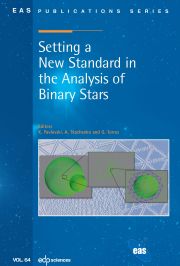Article contents
Theory of Low Mass Stars and Brown Dwarfs: Success andRemaining Uncertainties
Published online by Cambridge University Press: 25 September 2002
Abstract
Important progress has been made within the past few years regarding the theory of low mass stars (m < 1 M⊙) and brown dwarfs (m < 0.075 M⊙). The main improvements concern the equation of state of dense plasmas and the modelling of cool and dense atmospheres, necessary for a correct description of such objects. These theoretical efforts now yield a better understanding of these objects and good agreement with observations regarding colour-magnitude diagrams of globular clusters, mass-magnitude relationships and near-IR colour-magnitude diagrams for open clusters. However uncertainties still remain regarding synthetic optical colours and the complex problem of dust formation in the coolest atmosphere models. We will present a review of the current success and uncertainties of the theory of these objects, which may guide forthcoming projects with GAIA.
- Type
- Research Article
- Information
- European Astronomical Society Publications Series , Volume 2: GAIA: A European Space Project , 2002 , pp. 191 - 197
- Copyright
- © EAS, EDP Sciences, 2002
- 1
- Cited by




